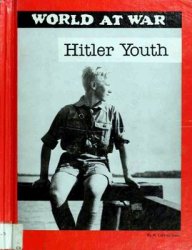ACA-2 is set up by Norman Anderson at Grand Island, Nebraska, in the early fall of 1968 to provide scheduled daily roundtrips to and from Omaha. Employing Piper lightplanes, Anderson initiates revenue flights on October 4 and is able to maintain them until 1970.
AIR COMMUTING: United States (1947-1948). Air Commuting, Inc. is established at New York City in the spring of 1947 to provide air taxi services from Manhattan to a number of points on Long Island. A Grumman G-73 Mallard is acquired and services are inaugurated on June 9.
Operations continue apace during the remainder of the year and into 1948. The little amphibious carrier cannot, however, achieve economic viability and is forced to shut down on June 30 after only 230 hrs. of flight. The Mallard is sold to Texaco, Inc.
AIR COMORES, S. A. (1): Comoros (1963-1974). AC-1 is formed at Moroni in 1963 to fly nonscheduled interisland charters in the French colony. Revenue flights commence between the four islands with one each Piper Apache and Piper Aztec.
Two de Havilland DH 114 Heron 1Bs are acquired from UTA (French Airlines, S. A.) in 1966 and are employed to significantly enhance services. Leadership is provided by CEO Yves le Bret, who also arranges the acquisition of two Douglas DC-3s and two DC-4s.
During the remainder of the year and in 1967, Moroni is linked to An-jouan, Dzaoudzi, Grande Comore, Mayotte, and Moheli. A twice-weekly service is also inaugurated to Dar es Salaam.
A DH-114 Heron 1B with a pilot and 15 passengers bounces upon landing at Moroni on January 27, 1968, lifts off again and plunges first into rocks and then into the sea; there are no survivors.
Service continues without incident thereafter, with the fleet enhanced by the acquisition of two Nord 262s. The first AC-1 shuts its doors in 1974 as the Comoro Islands prepare to receive their independence from France.
AIR COMORES, S. A. (2) (SOCIETE NATIONALE DES TRANSPORTS AERIENS, S. A.): Comoros (1975-1995). Upon the nation’s independence, this new entrant takes over the private carrier on July 6, 1975. Ownership is held by Air France (51%) and the Comoros government (49%), with A. A. Pigeat as managing director. With a fleet of 4 Douglas DC-4s provided by the French flag line, scheduled passenger and cargo services are undertaken linking the island capital with the archipelago cities of Anjouan, Dzaoudzi, and Moheli. International flights are started to Dar es Salaam, Mombasa, Antananarivo, and Ma-junga. The Air France shares are purchased by the government in April 1977.
The carrier is downsized somewhat during the remainder of the decade. Most of the international service is withdrawn and the DC-4s are replaced with a single Fokker F.27-200. Flights do continue to Ma-junga in the Malagasy Republic.
Airline employment at General Manager Djamai Eddine Ahmed’s company in the middle 1980s is approximately 75 and passenger en-planements average some 25,000 per year.
A significant capacity increase occurs in 1985 as a Boeing 737-244A is wet-leased from South African Airways (Pty.), Ltd. The “Baby Boeing,” repainted in AC-2 colors, is used to operate services to Cape Town, Zanzibar, Mombasa from Moheli.
In mid-1986, the carrier begins participation under contract in the Air France Alpha 3 computerized reservations system. Three DC-4s are again briefly operated late in the decade.
Operations continue apace in the 1990s and the DC-4s become permanent equipment. In a time of recession, the leased B-737-244A proves to offer too much lift and is returned to South Africa in 1992. In 1993, General Manager Ahmed oversees a workforce of 85 and a fleet of 3 DC-4s and 1 Fokker F.27-400. Services continue to be operated to Anjouan, Dzaoudzi, and Moheli in the Comoro Archipelago.
By 1994-1995 , AC-2 is laboring under significant debt and a growing inability to generate sufficient income to make necessary payments. The carrier stops flying in September of the latter year and is liquidated by November.
AIR CONGO, S. A. (1): Belgian Congo (1945-1949). AC-1 is formed in 1945 as a small bush operator and the air operating division of the trucking firm Chemins de Fer du Congo Superieur aux Grands Lacs Africains, S. A., based at Albertville in the western part of the country.
Between 1945 and 1947, it provides on-demand services to various destinations in the Belgian colony. On April 6 of the latter year, the light-planes previously employed are supplemented with a pair of Avro XIXs.
Two de Havilland DH 104 Doves are acquired in February 1948. In April, these, together with the Avros, launch scheduled services. Destinations visited once or twice a week include Kabalo, Kongolo, Kasongo, Kindu, Stanleyville, Buta, Costermansville, Goma, Elisabethville, Mit-waba, and Manono.
When Sabena Belgian World Airlines, S. A. is granted exclusive rights to all scheduled transport in the Congo in April 1949, it also takes over AC-1, its routes and assets, running it as the subsidiary Compag-nie Congolaise de Transports Aeriens, S. A. until June 1961.
AIR CONGO, S. A. (2): Congo (1961-1971) . With assistance from JAT (Yugoslav Airlines), begun the previous August 10, and with a protocol agreement with Sabena Belgian World Airlines, S. A. signed in January 1961, AC-2 is reborn on June 6 as the national airline of the democratic Congo. The airline is officially reconstituted and incorporated on June 28, with ownership divided between the Congo government (65%), So-belair, S. A. (5%), Air Brousse, S. A. (5%), and Sabena (30%).
AC-2 begins operations on June 29, receiving authority to operate all of the nation’s domestic and international services. The Belgian flag line is now able to halt the internal services in the now-independent nation that had been provided by its subsidiary, Compagnie Congolaise de Transports Aeriens, S. A. It now begins a six-year contract to training the new entrant’s personnel.
On September 17, one of the Starways, Ltd. DC-4s, which had been leased to Sabena Belgian World Airlines, S. A. in the spring, is destroyed on the ground at Kamina Airport, Congo, by Katangan fighter aircraft. The other is now turned over to AC-2.
Having first appealed to the UN for assistance in the reintegration of the break-away province of Katanga, President Patrice Lumumba now turns to the Soviet Union. Moscow dispatches 10-15 Ilyushin Il-14s, with their Aeroflot Soviet Airlines titles painted over in favor of hastily applied Congolese markings. These join five DC-3s requisitioned from AC-2 in transporting 1,000 Congolese National Army troops on December 31 to Luluabourg, capital of Kasai province, from where they are trucked toward Katanga, where their drive is halted by rebel forces.
The Congolese civil war will intensify during the remainder of the year and into 1962, particularly after the death of Lumumba.
The first jet service occurs almost a year later as a B-707-329 leased from the Belgian flag carrier begins flights from Leopoldville to Brussels in March 1963. During the remainder of the year, negotiations are carried out for the implementation of joint services with other airlines.
In January 1964, an agreement is signed with UTA French Airlines, S. A. Under its terms, the French carrier operates a joint DC-8 service with AC-2 over a route from Leopoldville to Paris via Douala. In June, the chartered Sabena Boeing adds a stop at Paris on its weekly service from Leopoldville to Brussels.
Feeder routes are expanded in October with the addition of four Beech 58 Barons. At the beginning of November, joint service is launched with Zambia Airways, S. A. over a return route from Elisa-bethville to Ndola. The Congolese fly the service on Fridays and the Zambians on Thursdays. While taking off from Stanleyville on November 30, a chartered DC-4 with 15 passengers is hit by rebel bullets and crashes (7 dead).
Including 16 on charter, the company by 1965 is operating a total of 46 aircraft: 1 leased B-707-329, 15 Beech 18s, 2 Curtiss C-46s, 11 Douglas DC-3s, 9 DC-4s, 3 DC-6s, and 5 Pipers. Orders are outstanding for another Beech and another Boeing jetliner. Enplanements for the year total 303,917.
After years in an acrimonious relationship, Sabena Belgian World Airlines, S. A. and AC-2 abruptly end their relationship in 1966 as the result of a political coup in the Congo late in 1965. Most of Sabena’s property and funds in the Congo are seized and its landing rights at Elis-abethville, now Lubumbashi, are cancelled.
Ownership is now divided between the Congolese government (70%), the Institut National Securite Sociale (8%), and other local interests (22%).
The Sabena interest is cancelled as is the year remaining on the training contract; only the shared Brussels service remains. H. Sangara becomes president and places a ?3-million order for two Sud Est SE-210 Caravelle IIRs.
Airline employment stands at 3,357 at the beginning of 1967. On May 12, a British Aircraft Corporation BAC 111-320L is leased from Laker Airways, Ltd. for a year. The weekly Brussels service, shared with Sabena Belgian World Airlines, S. A. for years, ends in June, with the BAC and a DC-6 now providing regional links to Burundi, Uganda, Kenya, Angola, and Nigeria. The joint venture with Zambia Airways, Ltd. is maintained.
In addition to long-haul services, AC-2 also maintains a 26-point domestic network with DC-3s and DC-4s, while Beech 18s fly to 27 small and bush communities. To improve these services, the company now places an order with Fokker for 10 F.27-600 turboprops.
The first Caravelle is delivered in October and, at the beginning of November, enters service with the BAC and DC-6 on regional routes. Destinations visited by the trio from Kinshasa include Lagos, Fort-Lamy, Bangui, Dar es Salaam, Entebbe, Nairobi, Lusaka, and Goma. The DC-6 also flies twice weekly between Kinshasa and Lubumbashi.
A DC-8-33, leased from Braniff International Airways, is delivered on November 25; in a new livery, it prominently flies the company’s European services four times a week from Lubumbashi and Kinshasa to Brussels and either Paris or Rome.
Operations continue apace in 1968 as the Laker BAC is returned. A DC-3 is lost at N’Djili on August 18.
In 1969, the company enters into a joint venture with Pan American World Airways (1), which provides management and fleet support. Fourteen personnel, including new Director General Francis J. Swayze, are posted to AC-2 to serve under President Lumumba.
A leased C-46 with 3 crew and 42 passengers crashes into the Congo River while circling for a landing at Kinshasa on April 16; there are no survivors.
A DC-3 is lost under unknown circumstances on February 15, 1970. Shortly thereafter, 2 DC-8-33s are leased from Pan Am, replacing the earlier aircraft. The fleet now also includes 1 Caravelle IIR, 3 DC-6s, 8 DC-4s, 7 DC-3s, and 8 F.27-600s.
Following creation of the republic of Zaire in October 1971, the airline becomes Air Zaire, S. A.
AIR CONGO (BRAZZAVILLE), S. A.: Congo (1961-1965). Com-pagnie Congolaise de Transports Aeriens, S. A. is reformed at Point-Noire, becoming the major, if privately owned, carrier of the newly democratic Congo on June 28, 1961 under the name Air Congo. UTA French Airlines, S. A. holds 30% minority shareholding and provides management and technical support.
Several routes formerly operated by Air Afrique, S. A. are acquired in 1963 and the company’s two Douglas DC-3 transports and a DC-4 now fly a triangle-shaped route network from Brazzaville to Point-Noire to the Gabonese city of Moanda. To avoid continuing confusion with Air Congo (2), the company is reformed, with new capitalization, on March 16, 1964, and renamed.
The government buys out the French share in 1965 and provides a new corporate identify for its national carrier, renaming it Lina Congo (Lignes Nationales Aerienes Congolaise, S. A.) in order to avoid lingering misidentification with Air Congo (2).




 World History
World History









